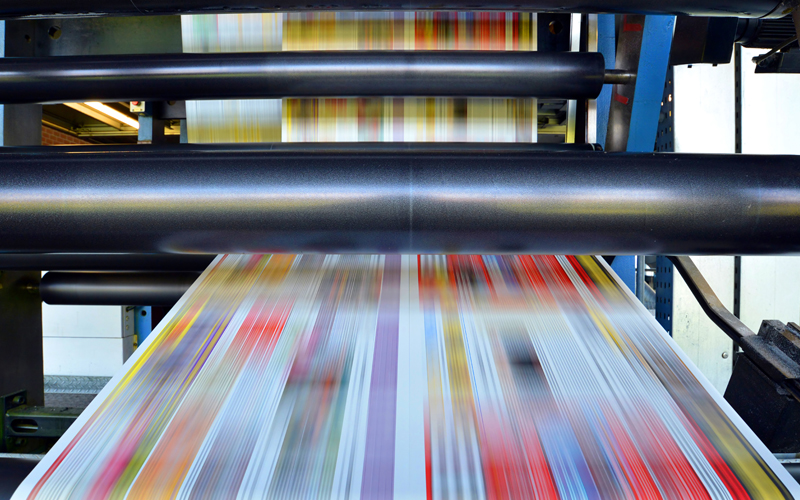
A Blue Guide Revision
Have you ever wondered what the European Union (EU) means by “placed on the market” and how it differs from “make available on the market”? Ever wonder what the CE Mark is really all about? These questions and many more are answered in the Blue Guide, the EU’s bible on product rules.
The 152-page Blue Guide is the guidance document to the New Legislative Framework (NLF). The Blue Guide says:
Regulation (EC) No 765/2008 and Decision No 768/2008/EC brought together, in the New Legislative Framework (NLF), all the elements required for a comprehensive regulatory framework to operate effectively for the safety and compliance of industrial products with the requirements adopted to protect the various public interests and for the proper functioning of the single market.
Regulation (EC) No 765/2008 establishes an overall framework of rules and principles in relation to accreditation and market surveillance.
Decision No 768/2008/EC defines the Common Principles of the NLF, reference provisions for community harmonization legislation and conformity assessment procedures.
NLF Directives and Regulations cover a wide variety of products: electrical and electronic equipment (EEE), toys, machinery, medical devices, tires and others. However, it is not all-inclusive regarding chemical safety or certain other product and producer requirements. While RoHS and the EcoDesign Directive and implementing measures are part of the NLF, regulations including REACH, biocides and the persistent organic pollutants regulation are not NLF legislation, and directives including battery, packaging and waste EEE are not NLF legislation.
Products subject to NLF legislation must address all applicable NLF regulations and directives in the product’s Declaration of Conformity, or DoC, as described in every NLF legislation and in the Blue Guide and must carry the CE Mark.
This version of the Blue Guide differs from the previous one due, in large part, to Regulation (EU) 2019/1020, which replaces Chapter III, Sections 1-3 (Articles 15-29) of 765/2008: “COMMUNITY MARKET SURVEILLANCE FRAMEWORK AND CONTROLS OF PRODUCTS ENTERING THE COMMUNITY MARKET.”
According to the press release, “It also elaborates on specific features such as distance sales, making products available on the market subject to physical modifications or software updates and the assessment of conformity assessment bodies.” The distance sales aspect should be of particular interest to the many (mostly smaller) manufacturers who sell online and target end users in the EU without a legal presence there and who do not have a formal importer. Section 2.4 says:
When an online interface provides for delivery in the EU, accepts payment by EU consumers/end-users and uses EU languages, then it can be considered that the operator has expressly chosen to supply products to EU consumers or other end-users. The physical delivery to end-users in the EU of a product ordered from a given online seller based outside the EU, including by a fulfilment service provider, gives irrefutable confirmation that a product is placed on the EU market.
And, thus, your product must comply with all the relevant NLF legislation and then some.
Implementing compliance to the technical regulations that apply directly to your products is one aspect of the NLF, but do not forget the administrative aspects: those are equally important. The updated Blue Guide is an incredibly helpful resource; if it could be done virtually, my copy would be extensively dog-eared.
French Packaging and Printing Ink Regulations
While it’s been around for a couple of years, the French LOI n° 2020-105 du 10 février 2020 relative à la lutte contre le gaspillage et à l'économie circulaire (per Google Translate: LAW n° 2020-105 of February 10, 2020 relating to the fight against waste and the circular economy) issued too vague a pronouncement in Section 112, stating (again, Google translated, because my five years of French in middle and high school seriously failed to take hold):
I. - As of January 1, 2022, it is forbidden to use mineral oils on packaging.
II. - As of January 1, 2025, it is forbidden to use mineral oils for printing intended for the public. For advertising prospectus letters and unsolicited catalogs aimed at commercial promotion, this prohibition applies from 1 January 2023.
Recently clients and others started asking me about this. “Mineral oils, you say? Like I use on my kitchen cutting board?” Well, no, not really. In early May, an order was issued that finally clarified the situation (leading to the inquiries I received). The mineral oils mentioned are
- mineral oil aromatic hydrocarbons (MOAH) with “1 to 7 aromatic rings” and
- mineral oil saturated hydrocarbons (MOSH) “containing 16 to 35 carbon atoms”
The restrictions now come into effect on January 1, 2023.
Until December 31, 2024, the acceptable concentration is 1 percent in inks for MOAH and, from January 1, 2025, 0.1 percent in inks for both MOAH and MOSH.
The reason, apparently, is that these toxic substances are present in recycled paper materials that are then used in food contact materials, migrate into food and, voilà!, we are exposed.
In the absence of an overdue Packaging Directive recast, France, Italy and other EU Member States have been implementing their own regulatory requirements that one would expect to be EU-wide or otherwise be preempted or made unnecessary by a recast. In fact, Directive (EU) 2018/852, which amended the Packaging Directive in 2018, called for a recast of the then 24 year-old Packaging Directive in Recital 29. Finally, in 2020, the European Commission began this project with an impact assessment and subsequent commitment to propose a revision of Directive 94/62/EC on packaging and packaging waste. We are still waiting for this proposal.
So, review the order (particularly if you have inventory) and check with your packaging and ink manufacturers for items shipped into or produced in and for the French market regarding the presence of these substances.
China VOC Standard
A couple of years ago, China issued a suite of standards covering volatile organic compound (VOC) content limits for raw materials like protective coatings (e.g. paints), adhesives, inks and cleaning agents used in the manufacture of a wide variety of products, including electronics. The Chinese government recently announced approval of another standard that is related but appears focused on VOCs that remain in finished electronics and are released after production, potentially exposing users.
This standard, called “电器电子产品限制释放挥发性有机物种类及阈值设定指南”, or (again, via Google translate) "Guidelines for Restricting the Types and Thresholds of Volatile Organic Compounds Released from Electrical and Electronic Products," while not yet available, has passed the “expert review” so is apparently a step closer to being issued.
Numerous components, particularly those that contain plastics, are painted or coated or printed with inks and may contain VOCs post-production. While it’s unclear whether this guideline leads to development of a mandatory standard or remain a guideline, consider working with suppliers to determine whether and which VOCs may remain in your components and finished goods.
Visit DCA at www.DesignChainAssociates.com or email the author with any questions or comments on this post.
Follow TTI, Inc. on LinkedIn for more news and market insights.
Statements of fact and opinions expressed in posts by contributors are the responsibility of the authors alone and do not imply an opinion of the officers or the representatives of TTI, Inc. or the TTI Family of Specialists.

